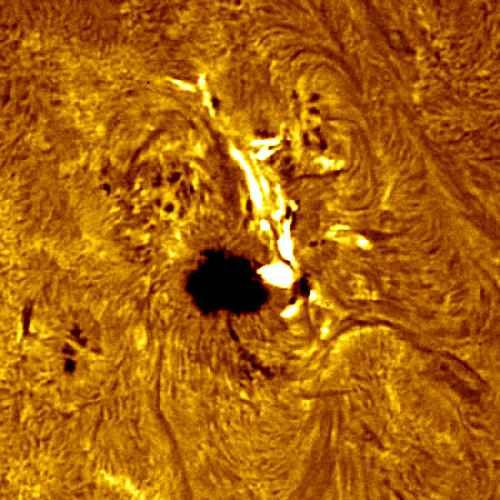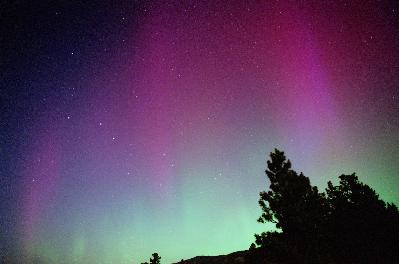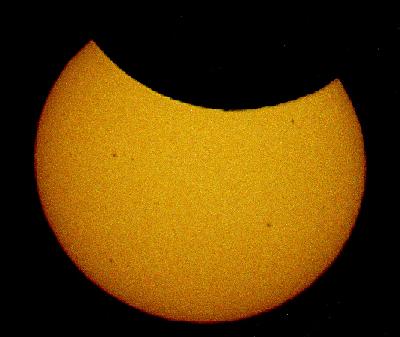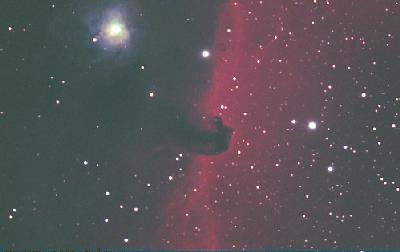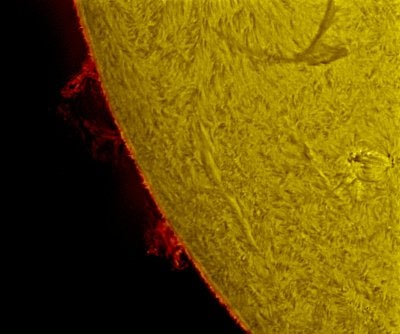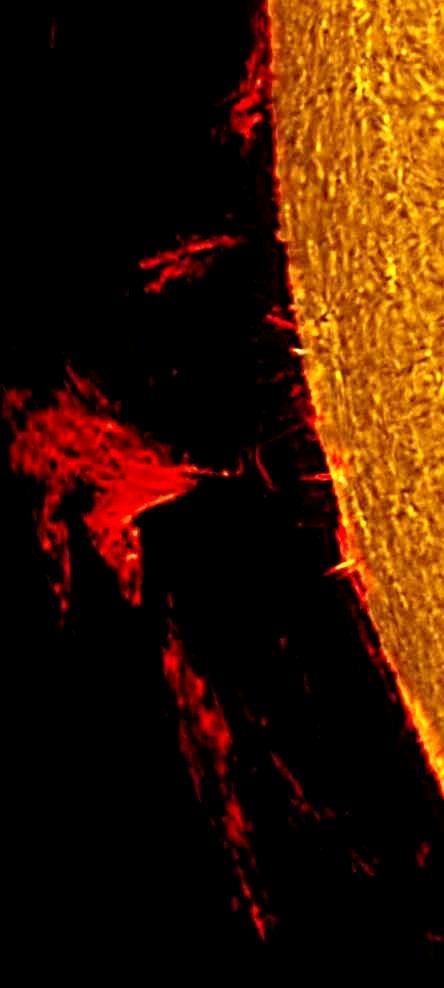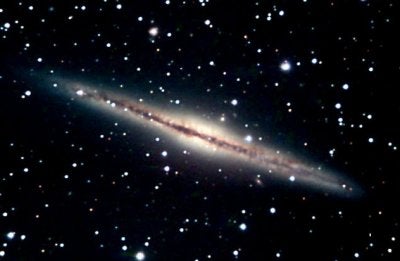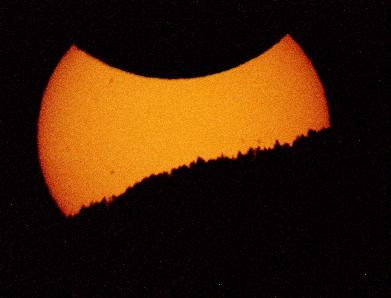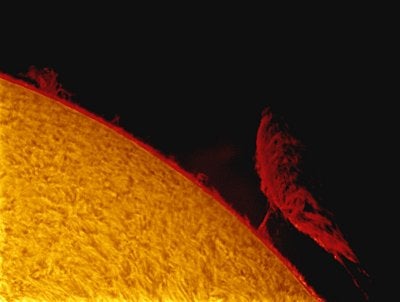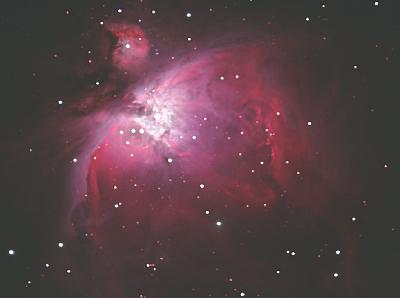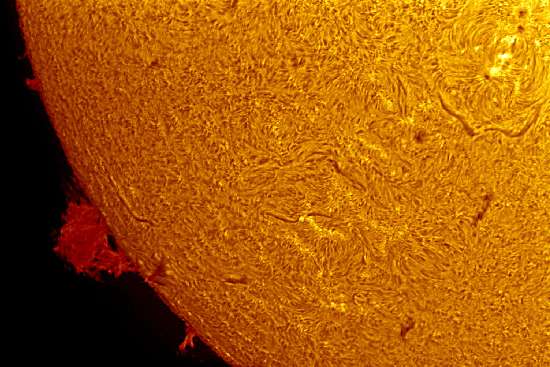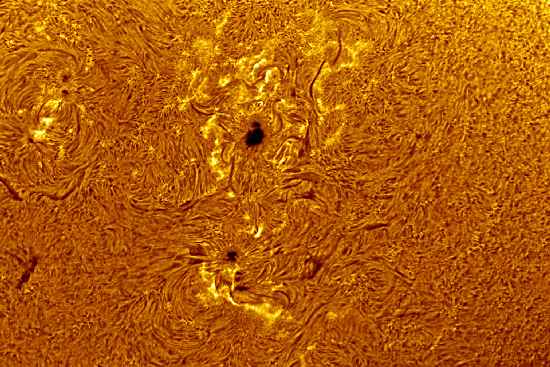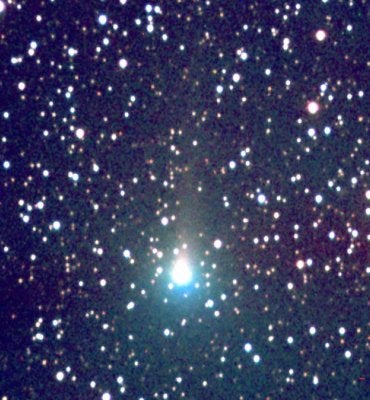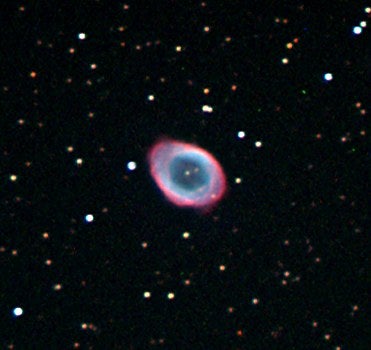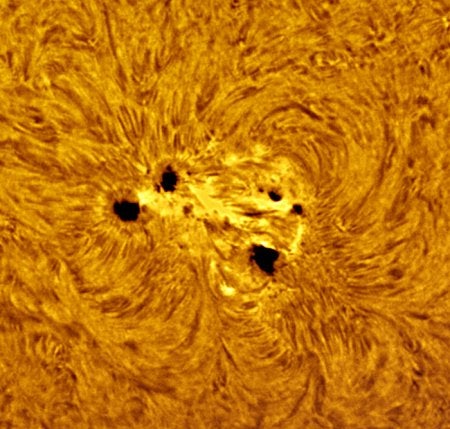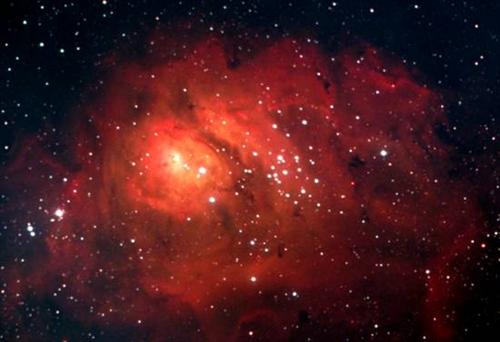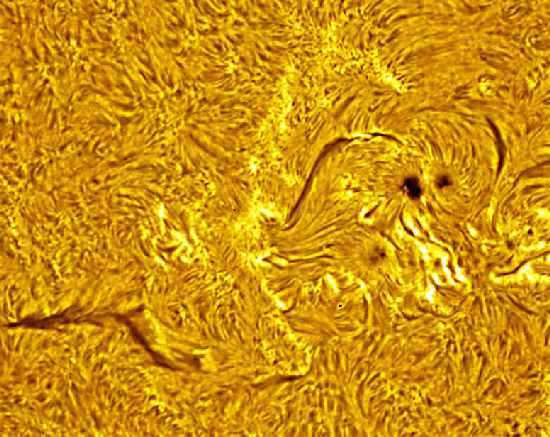Sunspot and flare
A very intense burst of Hydrogen-alpha (H-alpha) on the limb side of of this sunspot was imaged with a Coronado 90mm SolarMax H-alpha filter and a Meade 5-inch apochromatic refractor. All images Jack Newton
A very intense burst of Hydrogen-alpha (H-alpha) on the limb side of of this sunspot was imaged with a Coronado 90mm SolarMax H-alpha filter and a Meade 5-inch apochromatic refractor. All images Jack Newton
Canadian aurora
Veteran astroimager Jack Newton shot this view of the northern lights from his home in British Columbia. Can you pick out the Big Dipper?
Veteran astroimager Jack Newton shot this view of the northern lights from his home in British Columbia. Can you pick out the Big Dipper?
January eclipse
The Moon eclipses the Sun January 30, 2000.
The Moon eclipses the Sun January 30, 2000.
Horsehead Nebula
A ground-based telescope image of the Horsehead Nebula.
A ground-based telescope image of the Horsehead Nebula.
The Sun’s edge
This colorized view of the Sun’s edge was taken with a 90-millimeter Coronado H-alpha filter, a 7-inch Meade apochromatic refractor at f/32, and a 1616XTE CCD November 18, 2001.
This colorized view of the Sun’s edge was taken with a 90-millimeter Coronado H-alpha filter, a 7-inch Meade apochromatic refractor at f/32, and a 1616XTE CCD November 18, 2001.
The Sun’s limb
Jack Newton captured this solar prominence using a Coronado H-alpha filter, a 5-inch Meade APO refractor, and a Pictor CCD camera.
Jack Newton captured this solar prominence using a Coronado H-alpha filter, a 5-inch Meade APO refractor, and a Pictor CCD camera.
NGC 891
Discovered by Caroline Herschel in 1783, NGC 891 is an edge-on spiral galaxy in the constellation Andromeda. A dust lane cuts along its equator, creating the dark band seen here.
Discovered by Caroline Herschel in 1783, NGC 891 is an edge-on spiral galaxy in the constellation Andromeda. A dust lane cuts along its equator, creating the dark band seen here.
Setting solar eclipse
The January 30, 2000, solar eclipse.
The January 30, 2000, solar eclipse.
Solar prominence
This solar view was captured December 28, 2001, with a 7-inch Meade apochromatic refractor at f/32, a Coronado 90mm H-alpha filter, and a Meade 1616XTE CCD camera.
This solar view was captured December 28, 2001, with a 7-inch Meade apochromatic refractor at f/32, a Coronado 90mm H-alpha filter, and a Meade 1616XTE CCD camera.
M42
The Orion Nebula (M42) is a favorite target for binoculars and telescopes of all sizes.
The Orion Nebula (M42) is a favorite target for binoculars and telescopes of all sizes.
Solar flare
A violent explosion in the Sun’s atmosphere taken September 12, 2002.
A violent explosion in the Sun’s atmosphere taken September 12, 2002.
Sunspots
Dark, temporary, relatively cool spots on the surface of the Sun taken September 12, 2002.
Dark, temporary, relatively cool spots on the surface of the Sun taken September 12, 2002.
Comet 2001 Q2 (Petriew)
Jack Newton captured this image of Comet Petriew from Osoyoos, British Columbia, using a 16-inch Meade LX200 at f/10 and a Finger Lakes Dream Machine CCD camera.
Jack Newton captured this image of Comet Petriew from Osoyoos, British Columbia, using a 16-inch Meade LX200 at f/10 and a Finger Lakes Dream Machine CCD camera.
Ring Nebula (M57)
The Ring Nebula rests over 2,000 light-years from Earth, with a halo of material extending off to over 3.5 arcminutes.
The Ring Nebula rests over 2,000 light-years from Earth, with a halo of material extending off to over 3.5 arcminutes.
Sunspot 564
This sunspot, barely visible at first, developed to the size of nearly 8 Earth-widths across.
This sunspot, barely visible at first, developed to the size of nearly 8 Earth-widths across.
Lagoon Nebula (M8)
Approximately 5,200 light-years away, the Lagoon Nebula was first observed by Charles Messier May 23, 1764.
Approximately 5,200 light-years away, the Lagoon Nebula was first observed by Charles Messier May 23, 1764.
The solar surface
Taken July 3, 2002.
Taken July 3, 2002.

